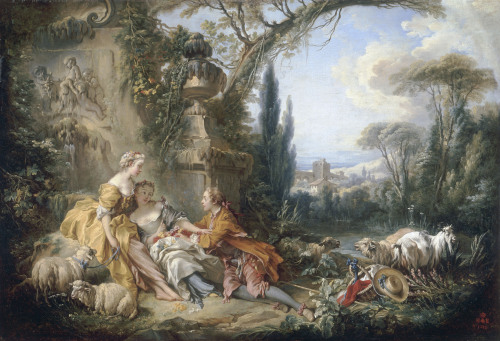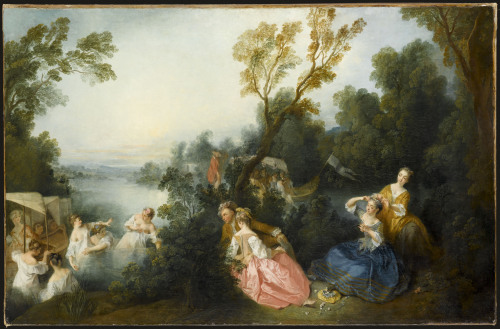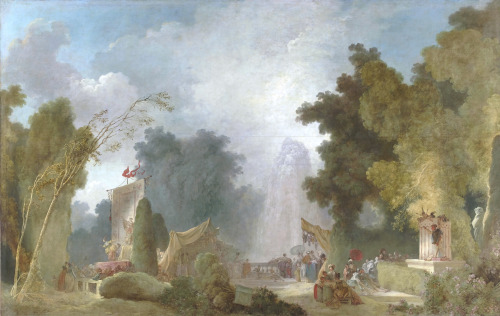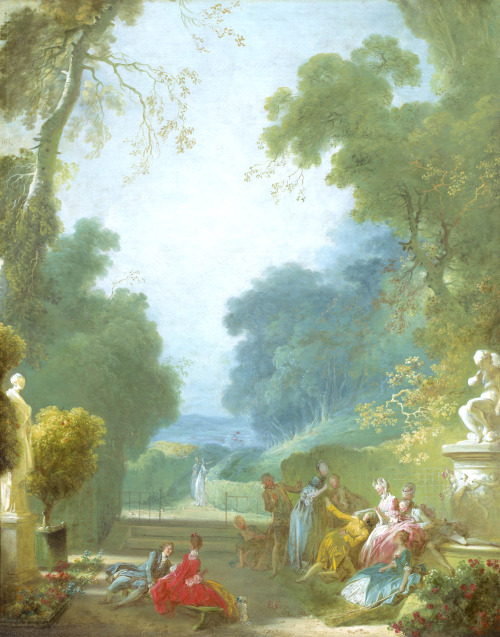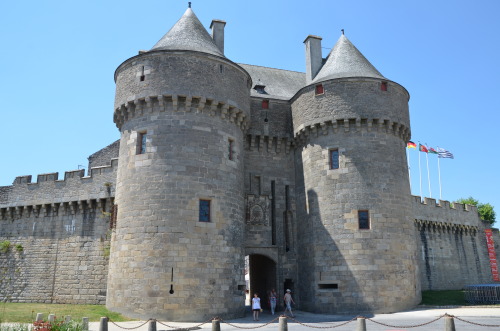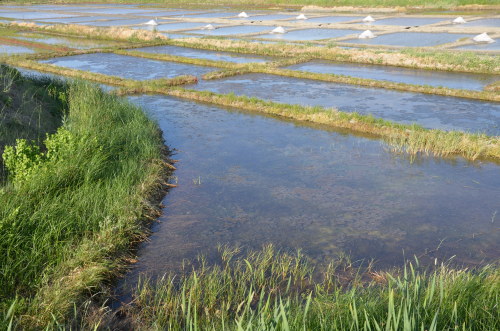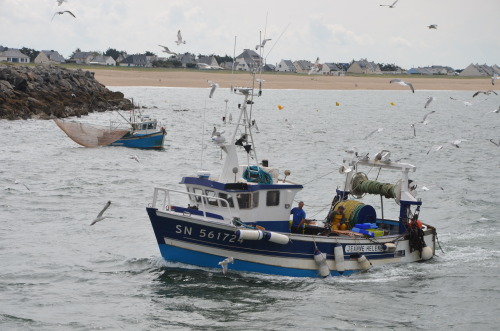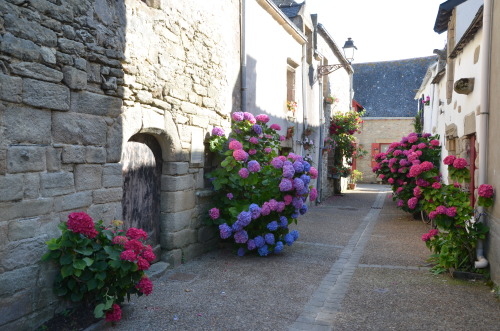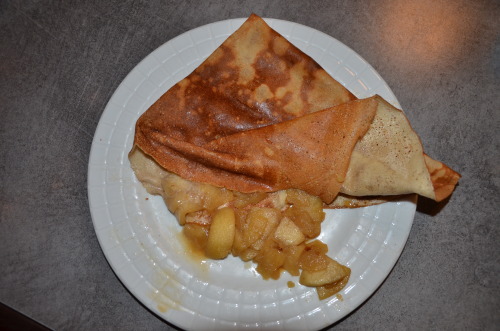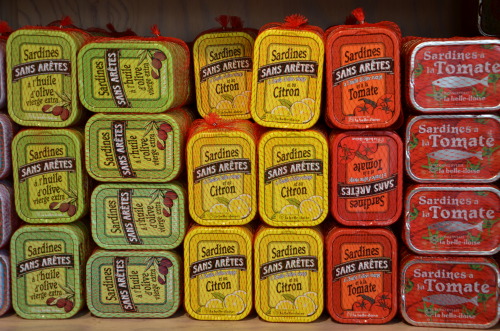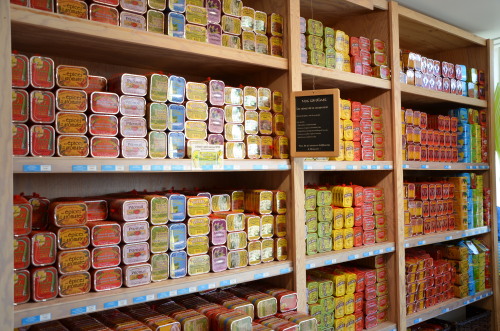#address
Teehee, we have personalized addressing! =) It’s so exciting! Now we just need people to send stuff to… ;) (We just need to stay here long enough for the stamps to be worthwhile.)
We actually got this a while ago, but I have yet to break it out… Thinking about it now that holiday cards are coming ‘round the corner though…
I guess I will have to start writing more letters and not just being lazy and relying on e-mail. >_< I agree that handwritten things are a lot cooler, but they also take more effort than I am willing to exert when I’m feeling lazy. We’ll see though… maybe in the near future… very very soon, I’ll be breaking these out… maybe… =P
But these make me feel so official somehow. Just, like a “real” person.
Post link
Explore the Fêtes Galantes at Paris’ Musée Jacquemart-André
From Watteau to Fragonard, Les Fêtes Galantes, an exhibition currently showing at Paris’ Jacquemart-André museum, is the perfect introduction to this elegant and refined period of French art history.
The term refers to a new style of painting and drawing that blossomed in the early 18th century, at the end of Louis XIV’s reign, and lasted throughout the Regency period. Typically, the paintings feature groups of men and women engaging in games or conversation amidst idealised representations of nature.
Located on the top floor of the Jacquemart-André museum, the exhibition explores, over 60 paintings and drawings, the chronological evolution of Fêtes Galantes.
The star of the exhibition is Jean-Honoré Fragonard’s La Fête à Saint-Cloud, a large painting on exceptional loan from France’s national bank La Banque de France. It depicts, in great detail, a fair in a Western suburb of Paris. There is a puppet theatre, puppet sellers, women playing, a fallen tree… Each scene could be a painting on its own.
Although La Fête a Saint-Cloud is an extraordinary painting and I was lucky to see it for real, my favourite section of the exhibition was the display of Antoine Watteau’s drawings, particularly his red chalks. Here, his talent and the spontaneity of his strokes are visible to all. Stripped from the corset of oil painting, his characters seem ready to move out of their frames, their clothes coming to life in the vivid rendering of fabrics and pleats.
Inspired by pastoral scenes, Watteau was a pioneer of the Fêtes Galantes genre. A fascinating short video at the very beginning of the exhibition explains how the at-times-lazy Watteau would cover his paintings with a sheet when his work done, just so he could make a copy and reuse groups of characters on other paintings. He used this technique on two depictions of a Pilgrimage to Cythera. Experts are still disputing which one he painted first. Neither painting is on display at the exhibition but the discussion surrounding them, particularly the debate as to whether the characters are arriving at or leaving from the island of love, is another Fêtes Galantes trait. Calling upon themes of love and relationship that resonate with all of us, the genre entices the imagination.
For instance, Jean-Francois de Troy’s The Rendez-Vous at the Fountain or The Alarm depicts a couple in close conversation. Is it an illicit meeting between lovers? Sweet words between newly enamoured young people? Or maybe a conversation between a man and a woman whose families disapprove of their union? A servant, asked to keep guard, interrupts. Quick, one of you hide! Someone is coming and they can’t be seen together.
Another painting that’s easy to extrapolate from is Jean-Baptiste Leprince’s La Precaution Inutile. A woman in her late teens sits on a bench, tied to an older man. He is sleeping. Is he a father, worried his daughter is going to show independent thought? A much older husband forced on her, concerned his wife might not be so enamoured with all his wrinkles? A servant tasked with looking after a girl displaying too much liberty? Whoever he is, his stratagem failed: a young man, partly hidden in the bushes, is taking advantage of his slumber to seduce the charge.
Beyond the beauty and technicality of the paintings, the Fêtes Galantes exhibition is a reminder of what romance was in the 18th century, and of the restrictions and social conventions imposed on individuals.
Sadly, the exhibition doesn’t make the best of its incredible surroundings. Much like the Nissim de Camondo museum, the Jacquemart-André Museum is a private mansion turned national museum, which dates back to the early 20th century. The Jacquemart-André couple collected multiple Fêtes Galantes paintings, which can be seen throughout the residence, without a clear link made to the exhibition taking place upstairs.
Collectors and artists, Edouard André and Nélie Jacquemart assembled, over 10 years, 5,000 or so oeuvres d’art ranging from Tiepolo’s massive fresco The Return of Henry III, moved from Italy to overlook the grand staircase, to Uccello’s iconic Saint Georges and the Dragon, which was reproduced in all my English language books.
An island of quietness straight on Boulevard Haussmann, the museum hosts a high-end café, with surroundings matching in grandeur and decoration the collections. There is a Fêtes Galantes-themed menu. My sister and I had the Lancret, a duck with soy and honey sauce, green asparagus and risotto and mushrooms. This was followed by a nutty Russian cake and a cream and raspberry-filled macaroon from the decadent dessert trolley. Despite this, the best part of the café probably is Parisians-watching. They are exactly the kind of Parisians you read about in books and magazines but don’t think exist in real life. This seems to be where they lunch.
Photo credits: (1) Antoine Watteau (1684-1721), La Proposition embarrassante Vers 1715 - 1720 Huile sur toile 65 x 84,5 cm Musée de l’Ermitage, Saint-Pétersbourg Photograph © The State Hermitage Museum / Vladimir Terebenin; (2) Antoine Watteau (1684 – 1721), Fête galante avec joueur de guitare et sculpture d’enfants jouant avec une chèvre Vers 1717-1719 Huile sur toile 115 x 167 cm Inv. Kat. Nr. 474 B Berlin, Staatliche Museen zu Berlin, Gemäldegalerie © BPK, Berlin, Dist. RMN-Grand Palais / Jörg P. Anders; (3) François Boucher (1703-1770), Les Charmes de la vie champêtre Huile sur toile 100 x 146 cm Musée du Louvre, Département des Peintures, Paris © RMN-Grand Palais (musée du Louvre) / Jean-Gilles Berizzi; (4) Antoine Watteau (1684-1721), Pierrot content Vers 1712-1713 Huile sur toile 35 x 31 cm Madrid, Museo Thyssen-Bornemisza © Museo Thyssen-Bornemisza, Madrid; (5) Nicolas Lancret (1690-1743), Fête Galante avec la Camargo dansant avec un partenaire Vers 1727-1728 Huile sur toile, 76,2 x 106,7 cm National Gallery of art, Washington, W. Mellon collection © Courtesy National Gallery of Art, Washington; (6) Nicolas Lancret (1690-1743), Baigneuses et spectateurs dans un paysage (Les Plaisirs du bain) Avant 1725, huile sur toile, 97 x 145 cm Paris, Musée du Louvre, Département des peintures, collection du baron Edmond de Rothschild (1926-1997); dation en paiement de droits de mutation, 1990 © RMN-Grand Palais (musée du Louvre) / Jean-Gilles Berizzi; (7) François Boucher (1703-1770), Pastorale Huile sur toile, 64,5 x 81 cm Karlsruhe, Staatliche Kunsthalle © Staatliche Kunsthalle Karlsruhe; (8) Jean-Honoré Fragonard (1732-1806), La Fête à Saint-Cloud Vers 1775-1780, huile sur toile, 214 x 334 cm Paris, Hôtel de Toulouse, siège de la Banque de France © RMN-Grand Palais / Gérard Blot; (9) Jean-Honoré Fragonard (1732-1806), Le Jeu de la Main chaude Vers 1775-1780 Huile sur toile, 115,5 x 91,5 cm Washington, D.C., National Gallery of art, Washington, Samuel H. Kress collection © Courtesy National Gallery of Art, Washington 3
Post link
Places to go and things to eat around Guérande (Brittany)
You might know Guérande (Photo 1) for its sea salt. It is collected in the Marais Salants (photo 2) through a long process that involves waiting for the seawater to evaporate. If you’re asked for more than €5 for a five kilo bag, at the market or at one of the shack on the side of the roads, you’re being had.
I know Guérande because aged one to five, I holidayed there every summer, at my grandparents’ house. I have limited memories of the place, although during the week I just spent there, I kept being struck by justified feelings of déjà-vu.
We stayed at Le Croisic (photo 3 and 10), a nice enough village at the end of a peninsula. I wouldn’t recommend it for a long term stay; you’d probably get claustrophobic as almost any journey requires going through the village of Batz-sur-Mer. Alternatives would be Piriac (photo 5), a typical Brittany village or La Turballe (photo 4), a port which is busy all year round. Local specialty: the sardines, which you can see being unloaded from the boats every day. You, and the dozens of seagulls waiting for their goodies.
O Jardin Secret, 10 quai du Port Ciguet, 44 490 Le Croisic
One of the best value-for-money restaurants on Le Croisic wharf, O Jardin Secret serves fresh products straight from the Criée (fish market) standing opposite. The basic, three-dish menu costs €16.90, and includes a choice of fish soup or home-smoked salmon for starter followed by the fish of the day with a beurre blanc sauce and mashed potatoes or meat. Dessert is a floating island, sorbet or the local Far Breton, a cooked custard with plums.
Crêperies
Holidaying in Brittany without eating a single crêpe should be a sin. They are the local pizza, best served with a bolée de cidre, a bowl of cider. Crêpes can be cheap since the ingredients involved aren’t costly – you shouldn’t pay more than €6 for a basic savoury galette de froment with ham and cheese, and no more than €4 for a basic sweet crepe with sugar and butter.
Fleur de Sel, Village de Kervalet, 44740 Batz-sur-Mer
The best crêperie we tried was the restaurant Fleur de Sel, located in the cute and typical village of Kervalet (photo 7). Aside from the traditional ham, cheese, mushrooms galettes, the place offers specials ranging from La Turballaise, spread with a sardine-butter-shallots concoction, to La Paludier, with eggs, onions, pancetta and cheese. I had La Bretonne with a leek fondue, pancetta, crème fraiche and cheese, which was the perfect balance of tastes. My dessert was La Pimms, which had nothing to do with the alcohol and was instead filled with orange marmalade, hot chocolate sauce and topped with an orange sorbet. My dad had La Gourmande, topped with salted caramel ice-cream and a warm chocolate sauce while my mum chose La Normande with stewed apples, vanilla ice cream and salted caramel (photo 6). The bill added up to €54, including a bottle of local cider. We left stuffed and content.
Le Commerce, 1 rue des Viviers, 56760 Penestin
Le Commerce, in the Morbihan county (insider tip: to figure out when you have crossed the border from one French county to the next, watch out for a sudden tarmac change), is a fast-served crêperie with an imaginative menu. I had a complète with ham, cheese, mushrooms and eggs, which was moist and filling. My dad had one with Andouille de Guéméné, a local sausage delicacy made with smoked pork large intestine, another must-taste from the region. My mum had one with ham and tomatoes that was a bit dry. For dessert, you can’t go wrong with another local specialty, the salted caramel spread. Mine, the decadent Angélique, came with whipped cream, toasted almonds and vanilla ice cream.
Local products
La Belle Iloise (photos 8 and 9) sells yummy tinned fish, three words you might not read together very often. The chain has stores all along the Brittany coast selling tuna, sardines, fish and lobster soups as well as mackerel sandwich fillings at factory prices. Take an empty suitcase: all products are sold by lots of at least three. Prices start around €5 for three salmon and tarragon spread tins. It’s also a great place for presents, since all stores offer assortments.
Driving through Brittany, you’ll keep seeing biscuiteriesandfabriques de biscuits on the side of the road. Park by any of them and you’re guaranteed to find a wealth of butter-based desserts: palets and galettes, gateaux Bretons, crepes, Kouign amann… La Trinitaine, a semi-industrial chain, sells the cheapest salted caramels of the lot at €17 per kilo. And I’d know, since we visited about 10 to compare. The salted caramel spread is a nice alternative, perfect on brioche, also produced locally. For a more upmarket and semi-artisan version, local son and “meilleur ouvrier de France” (‘best artisan in France’) George Larnicol has opened stores all over the region, selling for instance a little Kouign Amann, the Kouignette and Petit Ruilh, a melted biscuit filled with homemade jam.
Noirmoutier new potatoes. Like Jersey’s, but from a more local island. Can be found in any worth supermarket or from markets. | Secret Bichonné du couvent. A tome-like cheese with the cutest name (and considering France is rumoured to count 300 types of cheese, there was competition) since it means Beloved secret from the convent. | La Fraiseraie. A local artisan ice-cream chain that started in the 70s, growing strawberries around Pornic. You can still buy the locally picked strawberries, as well strawberry syrups and jams in their 10 stores but the real treat is their ice-cream: a rainbow of tastes. I recommend praline as well as poire-chocolat (pear and chocolate) made with actual pieces of pears.
All prices accurate as of 30 June 2014. Photos courtesy of Pierre Goulet.
Post link
Once again: Swedish can be so easy!
When you write a formal letter »to whom it may concern«, in German you have to address it to »Sehr geehrte Damen und Herren« which literally means »very honored ladies and gentlemen«.
In Swedish there are some more possibilities, but very easy rules. If you write a formal letter to an unknown woman you should write to »Bästa fru« or to an unknown man »Bäste herrn«—just like the English »Dear Madam« or »Dear Sir«. The gender-neutral version is »Bäste herr eller fru«—again like »Dear Sir or Madam« in English. However, this salutation is not so common in Sweden due to the very informal use of language. Since the abolishment of most polite forms in the 60’s, you can just write: »Hej!«
There is one exception if you want to send your formal letter to the king or queen. In this case, only »Eders Majestät« (»Your Majesty«) is correct in Sweden, while a letter to The Queen should should open with »Madam«.
Phrases for formal letters (German, Swedish): http://de.bab.la/phrasen/geschaeftlich/bab.la-phrasen-brief-deutsch-schwedisch.pdf
How to address the Swedish king: http://blogg.vett-och-etikett.com/kungligt-hur-inleds-ett-brev-till-till-kungen/
How to address The Queen: http://www.royal.gov.uk/hmthequeen/contactthequeen/overview.aspx
Photo: William Arthur Fine Stationery https://flic.kr/p/8513JQ
Post link
Whether you’re looking for something temporary during the holiday season or a full-time career, it often seems impossible to get your hands on an elusive job. How do other people do it? Luckily for you, we’ve done our research, had our fair share of jobs and figured out some of the best tips for snagging the job of your dreams (well, at least a job).
• Make a specific cover letter. Many people will not use a cover letter at all, and if they use one, it will be canned and generic. Make sure you stand out with a letter that shows you did your research on the company and are very interested in this specific position.
• Call the hiring managers. It’s so easy for us to rely on our computers to do everything digitally, which is why they’ll be impressed by your drive and determination. It also shows them you’re willing to go out of your comfort zone – definitely an important skill.
• Quantify your actions. Yeah, it’s great that you “babysat kids” at your last job, but doesn’t it sound better to say you “engaged and enhanced the learning environment for three children under the age of 6”? Use strong verbs and numbers to really tell what you did.
• Use an appropriate email address. Maybe you’ve been using the same email since middle school; the fact that you still remember the password to that is impressive. However, employers will not be impressed by whatever nickname you chose – just make a new one.
• Send a thank you note. If there are any people who help you move along in the job process, no matter what kind of contribution they made, you should thank them. They went out of their way, and they’ll appreciate it. Bonus points if you write them by hand.




